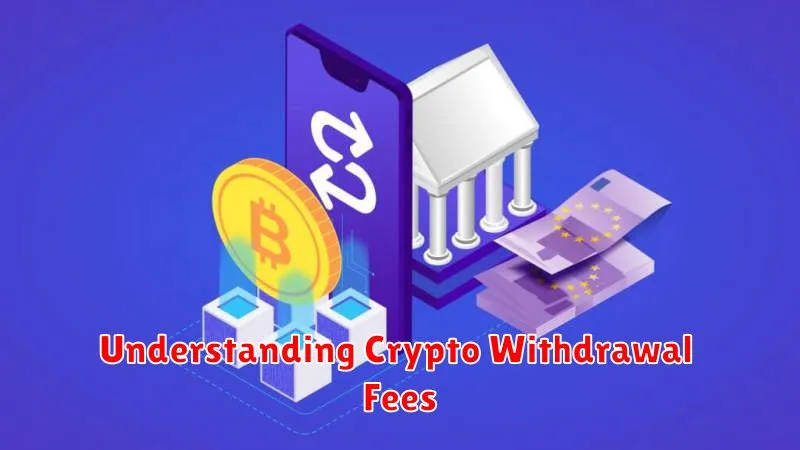Are you ready to withdraw crypto and finally get your digital assets into your bank account? This comprehensive guide provides a step-by-step walkthrough on how to seamlessly transfer cryptocurrency to your fiat currency account, covering everything from choosing the right exchange to understanding potential fees and security considerations. Learn how to navigate the process safely and efficiently, maximizing your crypto-to-fiat conversion while minimizing risks. Whether you’re a seasoned trader or a newcomer to the world of cryptocurrency, this guide will equip you with the knowledge you need to confidently withdraw your crypto.
Best Exchanges for Converting Crypto to Fiat

Choosing the right exchange is crucial for a smooth crypto-to-fiat conversion. Several factors influence this decision, including fees, available payment methods, security measures, and geographic restrictions. Security should always be a top priority; opt for established exchanges with a proven track record.
Coinbase and Kraken are popular choices, known for their user-friendly interfaces and robust security. They offer a wide selection of cryptocurrencies and various fiat on-ramp options, including bank transfers and debit/credit card payments. However, fees can vary.
For users seeking lower fees, Binance is often considered a competitive option, though its interface might be less intuitive for beginners. It boasts a massive trading volume and supports numerous cryptocurrencies and fiat currencies. Always research specific fee structures before committing to a platform.
LocalBitcoins provides a peer-to-peer (P2P) trading platform, allowing direct transactions with other users. This offers potential flexibility but requires more caution regarding security and counterparty risk. Thorough due diligence is paramount when using P2P exchanges.
Ultimately, the best exchange depends on your individual needs and preferences. Carefully consider your priorities – security, fees, user experience, and supported currencies – before making your choice. Always compare multiple options to find the most suitable platform for your crypto-to-fiat conversion needs.
How to Use P2P Trading for Cashing Out

Peer-to-peer (P2P) trading platforms offer a direct method for converting your cryptocurrency into fiat currency, such as USD, which you can then deposit into your bank account. These platforms connect buyers and sellers directly, eliminating the need for intermediaries.
To use P2P trading for cashing out, first, you’ll need to select a reputable P2P platform. Consider factors like fees, available payment methods, and user reviews.
Next, create an account and verify your identity. This usually involves providing personal information and potentially uploading identification documents.
Then, create a sell order, specifying the amount of cryptocurrency you wish to sell and your preferred payment method (e.g., bank transfer, mobile payment). Be sure to set a competitive price to attract buyers.
Once a buyer accepts your order, you’ll release the cryptocurrency to the platform’s escrow service. The buyer then completes the payment according to the agreed-upon method.
After the platform verifies the payment, you’ll receive the fiat currency in your designated account. The timeline for this process varies depending on the platform and chosen payment method.
Important Note: Always prioritize security when using P2P platforms. Be cautious of scams and only use verified payment methods. Thoroughly research the platform before using it.
Understanding Crypto Withdrawal Fees

Withdrawing cryptocurrency to your bank account usually involves several fees. Understanding these fees is crucial to avoid unexpected costs.
Network Fees (Gas Fees): These are transaction fees paid to the cryptocurrency network itself (e.g., Ethereum, Bitcoin) to process your withdrawal. The amount varies depending on the network’s congestion. Higher congestion leads to higher fees.
Exchange Fees: Cryptocurrency exchanges often charge a fee for processing your withdrawal request. This fee can be a percentage of the amount withdrawn or a fixed amount, and varies widely between exchanges.
Third-Party Processor Fees: If your withdrawal involves a third-party payment processor (e.g., a service that converts crypto to fiat currency), you’ll likely incur additional fees from this intermediary. These fees can be substantial.
Bank Fees: Your bank may also charge fees for receiving international wire transfers, particularly if the transaction is in a foreign currency. It is important to check with your bank beforehand.
Total Withdrawal Cost: The overall cost is the sum of all these individual fees. Therefore, it’s essential to account for network fees, exchange fees, third-party processor fees, and potential bank fees when planning your withdrawal.
How to Avoid Crypto-to-Fiat Conversion Scams

Crypto-to-fiat conversion scams are prevalent, preying on users seeking to cash out their digital assets. Beware of unsolicited offers promising unusually high exchange rates or quick, easy conversions. These are often traps.
Only use reputable and established exchanges with a proven track record and strong security measures. Verify their legitimacy through independent research and user reviews. Avoid exchanges with poor reputations or lacking transparent fees.
Never share your private keys or seed phrases with anyone, including supposed representatives of exchanges or other services. These are crucial to securing your crypto and should be guarded fiercely. Legitimate services will never request this information.
Scrutinize the exchange’s payment methods. Be wary of unconventional or complicated payment processes, as these often mask fraudulent activities. Stick to familiar and secure methods.
Double-check the receiving details before initiating any transactions. Ensure that the bank account details match the intended recipient, as errors can lead to irreversible losses.
Report suspicious activity immediately. If you encounter a suspicious offer or experience a potential scam, report it to the appropriate authorities and the exchange you’re using.
Exercise caution and skepticism. If a deal seems too good to be true, it probably is. Take your time, research thoroughly, and never rush into a transaction.
Tax Implications When Cashing Out Crypto

Cashing out cryptocurrency has significant tax implications in most jurisdictions. When you sell, exchange, or otherwise dispose of your crypto for fiat currency (like USD), you trigger a taxable event. This means you’ll need to report the gain or loss on your tax return.
The tax rate applied depends on your country of residence and the length of time you held the cryptocurrency. Generally, short-term gains (crypto held for less than one year) are taxed at your ordinary income tax rate, while long-term gains (crypto held for over one year) are taxed at the capital gains tax rate, which is usually lower.
Calculating your gain or loss involves determining your cost basis (the original purchase price) and subtracting it from the sale price. Accurate record-keeping, including purchase dates and transaction details, is crucial for accurate tax reporting. Consider using crypto tax software to help manage and track your transactions.
Failure to report crypto transactions accurately can result in significant penalties and interest. Consult with a qualified tax professional to understand the specific tax rules applicable to your situation and ensure compliance with your local tax laws. The complexities of crypto taxation often require specialized expertise.

